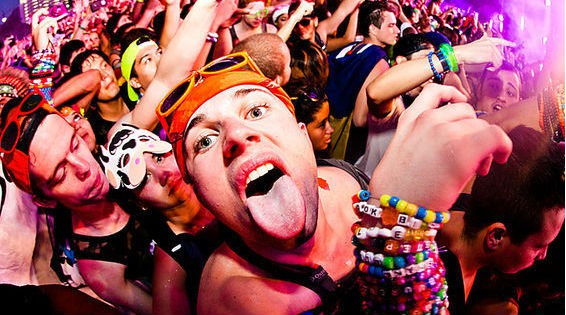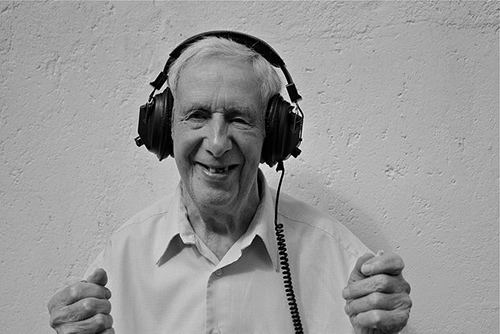Music Therapy in Addiction Recovery
The Power of Music
Music is something that most people will take for granted, but it can
have an impact on their life. It can have a powerful influence on
emotions and mood. Listening to a happy song can lift people’s spirits
while some tunes can lead the individual to feelings of despair. The
thing that makes music so special is that it allows people to
communicate their moods. It can be difficult to explain a mood to other
people, but music can express it exactly. There are many claims made for
the power of music, and there is growing scientific evidence to back
some of these. Music therapy has been shown to help people manage deal
better with a variety of conditions. There is also good evidence to
suggest that it will help those individuals who are trying to build a
life away from addiction.
Music Therapy Defined
Music therapy can be defined as the clinical and evidence-based use of music to accomplish individualized goals within a therapeutic relationship. It involves using music to help people manage physical, emotional, or cognitive problems. The client can interact with the music in different ways such as listening, singing, or dancing to the beat. They can also write songs or discuss lyrics.Music Therapy Explained
Music therapy involves using the power of music in a controlled way. The music therapist is trained to in how to use music effectively. They can use their knowledge to decide on the exact course of treatment that will work best for each client. When they first meet the client the goals of treatment will be established, and this will guide their efforts. The therapy may involve some type of music creation or it could be just listening.Benefits of Music Therapy
There are a number of purported benefits for this type of therapy including:* It can help people reduce their stress levels. It encourages the relaxation response.
* It may lower blood pressure and is being used to treat hypertension
* Those individuals who are dealing depression can benefit from a lessening of their symptoms.
* Music may help to protect the heart.
* It can help improve communication abilities for people with autism.
* It can help people deal better with anxiety.
* Music can create a meditative state in the listener. This is because when music has a strong beat brain waves will become stimulated and fall into sync.
* Listening to music with a fast beat can improve concentration levels.
* It can encourage a more optimistic state of mind. The individual will be able to benefit from this increased positivity even after they have stopped listening.
* It can give the body’s immune system a boost. It therefore promotes healing and helps the body ward off illness.
* It can be useful for reducing muscle tension.
* It can help women cope better with the pain of labor.
* Listening to music can help people who are suffering from chronic pain.
* It reduces feelings of loneliness.
* It can help people dealing with Alzheimer’s disease.
* It is a good antidote to boredom.
* Listening to music can even increase spirituality or used as a tool to help people progress along a spiritual path. There are even some people who use music as a means to achieve spiritual enlightenment.
* It can work as an emotional release.
* It can help people overcome an addiction and can be a useful tool in recovery.
Music Therapy and Addiction
Music therapy can be of great value to people who are attempting to overcome an addiction. It is unlikely to be enough alone to help an individual recovery from substance abuse, but it can be a useful supplement to other types of addiction treatment. The benefits of music therapy for people recovering from an addiction include:* When people first become sober they are likely to experience a rollercoaster ride of emotions. Creating music may help people purge some of their more destructive emotions.
* A common reason why people relapse after a period of sobriety is that they feel unable to manage their stress levels. Listening to or creating music can be a wonderful stress booster.
* Boredom is another relapse trigger for those in early recovery. It is usually easy for people to put on some music and this can relieve their sense of boredom.
* When people first become sober they can experience a bit of loneliness due to breaking away from their network of drinking or drug using friends. Music is good for helping people feel a bit less alone in the world.
* Music therapy can be all about enjoyment and do is recovery from an addiction.
* Meditation can be a highly beneficial tool for people in recovery. Music can be a good introduction into meditating for those who do not yet have the patience for a more formal practice.
* When people first become sober they can struggle with mental fuzziness. Music may help to improve their concentration levels.
* If people are dealing with symptoms of depression they may find that listening to music can help with this.
Music and Romancing the Drink or Drug
While music can almost certainly help people in recovery there may be some types that those who are newly sober will be best to avoid. If the individual spends a great deal of time listening to those tracks that they associate with drinking or using drugs it could increase the risk of relapse. This is because it will trigger memories of the times when the individual felt that their substance abuse was pleasurable – this is referred to as romancing the drink. It is possible to associate fresh memories with old music favorites, but this is probably best left until people are more secure in their sobriety. For the first year or so it may be best to completely avoid any music associated with substance abuse. There will be plenty of other types of music to explore and enjoy.Thamkrabok Rehab Temple and Music Therapy
Thamkrabok is a Buddhist temple in Thailand that offers treatment to people who wish to recovery from an addiction. Music plays an important role at the temple because of its therapeutic powers. The monks of Thamkrabok even have their own recording studio. The former abbot of this temple believed that nature had its own music, and that it was possible for those who listened carefully enough to hear it. The monks even have a method of transcribing cracks in the wall of natural stone into musical composition. The UK musician Tim Arnold made a whole album this way.Things to Consider with Music Therapy
If people hope to benefit from music therapy there are a number of things worth considering:* In order to get the most from this type of therapy it is best to stick to a credentialed professional who has gone through an approved program.
* It is not necessary for people to have any type of musical ability in order to benefit from this treatment. They may not even like music very much to begin with.
* Music therapy can be of benefit to people of all ages.
* It is possible for the individual to create their own playlist of therapeutic music by adding those tracks that they found soothing. This may be less beneficial than a proper assessment by a music therapist, but it certainly can be helpful.
* There is no right music for relaxation. Some people will feel relaxed while listening to classical music but for other people it could be punk rock.
* It is a good idea to keep a journal in order to record how different types of music impact mood and feelings of relaxation. This way the individual will discover the music that works best for them.
* If people are having difficulties concentrating they may wish to try music with a fast beat to see if this helps.
* Music can be a wonderful tool to help people exercise. These tracks can motivate and encourage the individual to pick up the tempo of their activity.
* Meditation music can help the individual experience meditative states. It is not a good idea to use music long-term for meditation because it becomes too much as a crutch and can prevent the individual from advancing along this path.
* Simple drumming is a relatively easy thing for people to learn. This type of music creativity can be good for escaping pain and emotional turmoil.
* Learning to play a musical instrument can be a great choice for people in recovery. As well as this being entertaining it will also be a great stress buster.
SOURCE: http://alcoholrehab.com/addiction-recovery/music-therapy-in-addiction-recovery/











